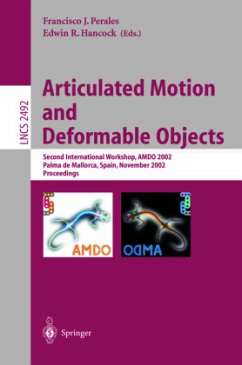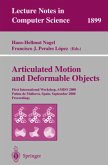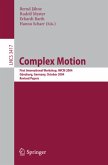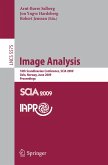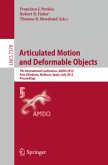The AMDO 2002 workshop took place at the Universitat de les Illes Balears (UIB) on 21 23 November, 2002, sponsored by the International Association for Pattern Recognition (IAPR), AERFAI (Spanish Association for Pattern Rec- nition and Image Analysis), the CICYT (Comision Interministerial de Ciencia y Tecnologia, Spanish Government), the European Commission (Human Potential Programme: High Level Scienti?c Conferences), and the Mathematics and C- puter Science Department of the UIB. In addition, Egse (Eurographics Spanish Chapter)helpedwithdisseminationandpromotion. Thesubjectoftheworkshop wasongoingresearchinarticulatedmotiononasequenceofimagesandsophis- cated models for deformable objects. The goals of these areas are to understand and interpret the motion of complex objects that can be found in sequences of images in the real world. These topics (geometric and physically deformable models, motion analysis, articulated models and animation, visualization of - formable models, 3Drecovery from motion, single or multiple human motion analysis and synthesis, applications of deformable models and motion analysis, face tracking, recovering and recognition models, etc. ) are actually very int- esting ways of organizing important research to solve more general problems. Another objective of this workshop was to relate ?elds using computer graphics, computer animation, or applications in several disciplines combining synthetic andanalyticalimages. Inthisregarditisofparticularinteresttoencouragelinks betweenresearchersinareasofcomputervisionandcomputergraphicswhohave common problems and frequently use similar techniques. Theworkshopincluded?vesessionsofpresentedpapersandtwotutorials. - vited talks treating various aspects of the topics were: Haptic-based Deformable Solid of Arbitrary Topology, by Prof. H. Qin from the State University of New York at Stony Brook (USA); Passive 3D Human Motion Capture: Vision-Based Tracking Meets Computer Animation, by Prof. I.

